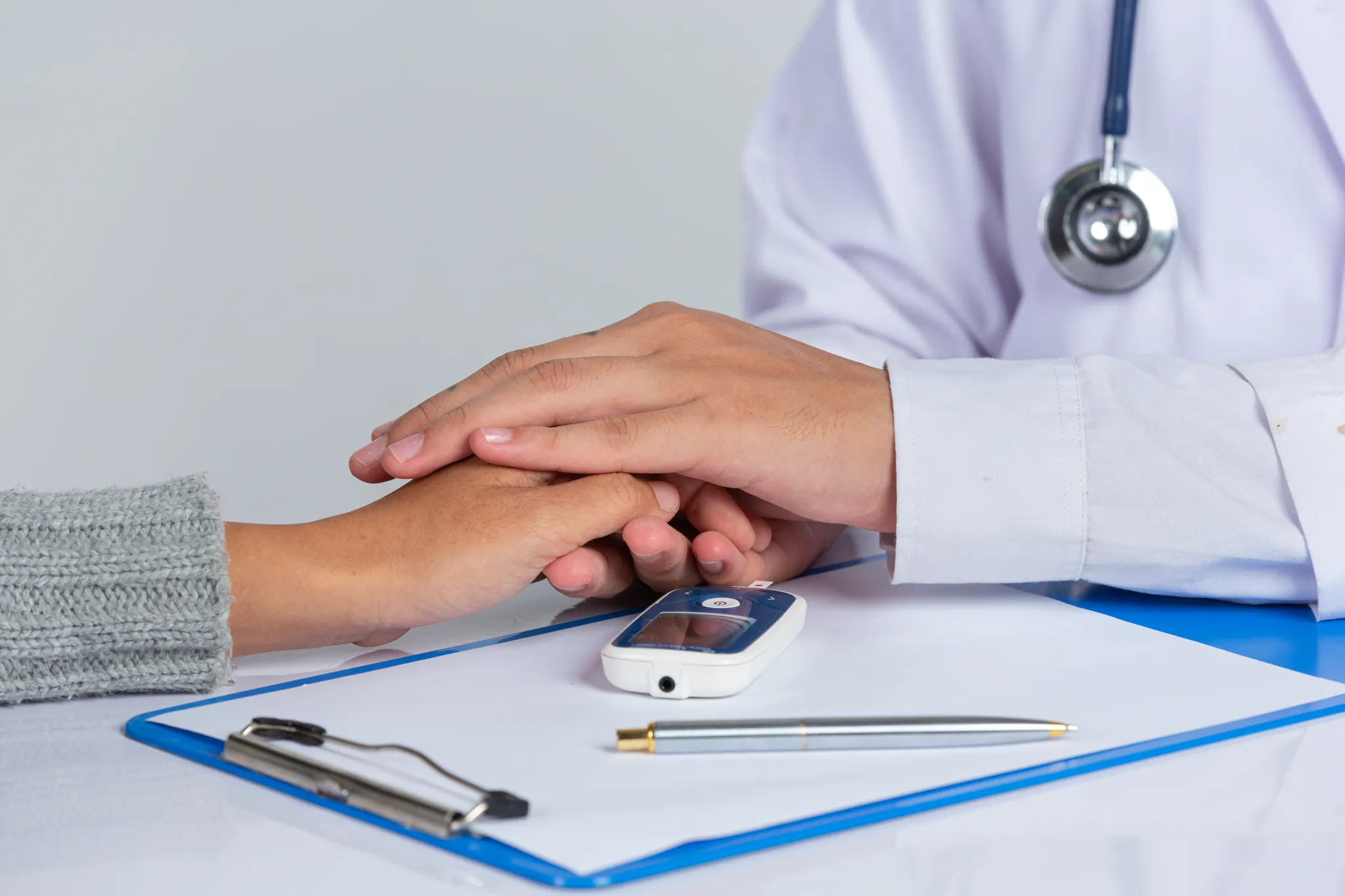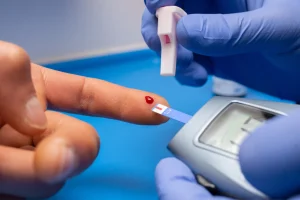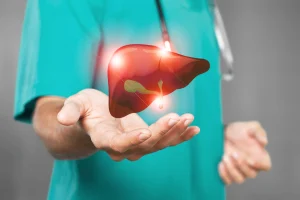For years, type 2 diabetes has been seen as a lifelong condition – once diagnosed, people assumed they’d always need medications or insulin. But in recent years, research has given hope: diabetes doesn’t always have to be permanent. This is where the concept of diabetes remission comes in.
So, what is diabetes remission? Simply put, it’s when someone with diabetes manages to bring their blood sugar levels back to a non-diabetic range and keep them there for a sustained period, all without relying on diabetes medications.
While it isn’t called a “cure” (because diabetes can return), remission is life-changing for many, improving both health and quality of life.
In this blog, we’ll break down:
- How diabetes remission works
- How can it be achieved
- How long does diabetes remission last, and what affects its duration
- Tips to maintain remission in the long run
- FAQs about remission vs. reversal
⇒ ⇒ Read More: Glucometer vs CGM for Tracking Blood Sugar – Which is Right for You?
What Exactly is Diabetes Remission?
Health organizations like the American Diabetes Association and Diabetes UK define remission as maintaining HbA1c below 6.5% (a marker of average blood glucose) for at least three months without medication.
There are three levels of diabetes remission:
- Partial Remission: Blood sugars drop below diabetic levels but remain slightly above normal.
- Complete Remission: Blood sugars return completely to normal ranges for at least one year.
- Prolonged Remission: Complete remission that lasts five years or more.
It’s important to remember: remission doesn’t mean diabetes is gone forever. It’s more like diabetes going into “hiding,” and it requires ongoing care to maintain.
⇒ ⇒ Read More: How to Check if Your Metabolism is Damaged
How Does Diabetes Remission Happen?
Type 2 diabetes develops when the body becomes resistant to insulin and the pancreas can’t make enough to compensate. Over time, excess fat in the liver and pancreas worsens this problem.
Research shows that significant weight loss, especially reducing fat in the liver and pancreas, can “reset” the body:
- The liver stops overproducing glucose.
- The pancreas regains its ability to produce insulin.
- Muscles become more sensitive to insulin.
In short, shedding excess fat allows the body’s natural systems to work more effectively again, leading to normal blood sugar control.
⇒ ⇒ Read More: Is Papaya Good for Diabetes? Benefits, How to Eat It, and Smart Alternatives
How is Diabetes Remission Achieved?
There’s no single path to remission; different people may succeed through different strategies. Here are the main approaches:
- Intensive Dietary Change
- Very low-calorie diets (about 800 calories/day, under medical supervision) have shown high remission rates.
- Weight loss of 10–15% of body weight often makes a big difference.
- Even moderate changes like reducing refined carbs and eating more whole, high-fibre foods can support remission.
- Bariatric (Metabolic) Surgery
- Gastric bypass or sleeve gastrectomy often leads to remission, sometimes within days after surgery due to hormonal changes.
- Most effective for people with obesity (BMI ≥35).
- Long-term studies show many remain diabetes-free for over 5 years post-surgery.
- Comprehensive Lifestyle Programs
- Combining diet, regular exercise, and behaviour change.
- Using tools like Continuous Glucose Monitors (CGMs) to see in real time how meals and activities affect sugar.
- Programs in India and worldwide now use tech plus coaching, yoga, and group support to make changes stick.
- In newly diagnosed patients, short-term intensive insulin therapy can sometimes “rest” the pancreas and lead to remission.
- Newer medications like GLP-1 agonists or SGLT2 inhibitors can aid weight loss and metabolic improvements, setting the stage for remission.
- Always under medical supervision, never stop prescribed medicines on your own.
How Long Can Diabetes Remission Last?
This is one of the most common questions: how long can diabetes remission last?
- Partial or complete remission may last for months to several years.
- Prolonged remission (5+ years) has been documented, especially after bariatric surgery or early lifestyle interventions.
- However, remission is not always permanent. Factors like regaining weight, returning to old habits, or natural ageing can cause blood sugar levels to rise again.
The earlier remission is achieved after diagnosis, the longer it tends to last.
⇒ ⇒ Read More: What’s the Difference Between Metabolism & Digestion?
How to Maintain Diabetes Remission Long-Term?
Once remission is achieved, the focus shifts to keeping it. Here’s how:
- Healthy diet: Prioritize vegetables, whole grains, pulses, lean protein, and healthy fats. Limit refined carbs and sugary foods.
- Regular activity: Walking after meals, strength training, yoga, or any enjoyable activity helps keep insulin sensitivity strong.
- Weight management: Avoid regaining lost weight, as this often leads to relapse.
- Stress management: High stress can raise blood sugar. Practices like meditation, breathing exercises, or simple hobbies help.
- Sleep quality: Poor sleep affects insulin resistance. Aim for 7–8 hours nightly.
- Track your progress: Use a Continuous Glucose Monitor (CGM) or regular testing to stay on top of changes early.
- Supplements & medication review: Work with a doctor to check if nutritional supplements (like Vitamin D, Omega-3) or preventive medications for heart and kidney health are needed.
Remission vs. Reversal: What’s the Difference?
Many people talk about “reversing” diabetes. While inspiring, the medical community prefers the word remission:
- Reversal sounds like a permanent cure, which isn’t guaranteed.
- Remission acknowledges that diabetes can come back if healthy habits aren’t maintained.
Think of remission like cancer remission, a state of control, but not necessarily a cure.
⇒ ⇒ Read Detailed Blog Here: What is the Difference Between Diabetes Remission, Reversal & Cure?
Conclusion: A Second Chance at Health
Diabetes remission is not a miracle cure, but it is a powerful second chance. By addressing the root causes of type 2 diabetes through diet, exercise, weight management, and sometimes surgery or medications, many people can achieve normal blood sugar without drugs.
The key is sustaining lifestyle changes and working closely with healthcare professionals. Even partial remission improves health outcomes and reduces complications.
Take the Next Step: Track Your Remission Journey
If you’re working toward or already in remission, don’t leave it to chance. Tools like Continuous Glucose Monitoring (CGM), combined with expert coaching, can help you track progress, spot risks early, and stay motivated.
Take charge of your journey with the right support, and diabetes remission is possible and sustainable.









